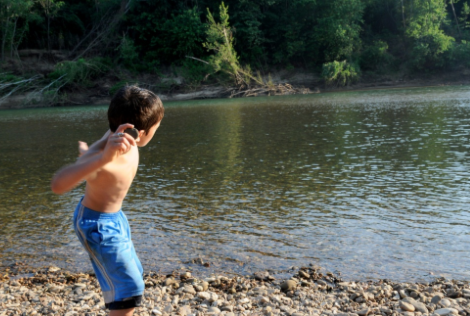Reports have been prepared which indicate that C & H Hog Farm does not pose an environmental threat to the area or to the river. These reports were put together by two organizations: FSA (Farm Service Agency) and SBA (Small Business Administration). FSA and SBA provided 75% to 95% of the loan guarantees for the C & H Hog Farm loans. This suggests that these federal agencies are financial partners with the farm. FSA and SBA retained EESI (Environmental and Energy Study Institute) to perform the Environmental Assessment (EA) and write the draft report. According to sources, FSA and SBA were also involved in the overall preparation of the report.
Because of this, it is reasonable to believe that the FSA and SBA would not want an EA commissioned by them to conclude there was a significant risk to the environment from C & H Hog Farm. It is strongly believed that the FSA and SBA played a significant role in the reports to the EA by influencing the information used or urging the omitting of information from EESI’s conclusions to the EA. The significant bias from which the reports were created has failed to accurately identify and characterize the nature and extent of the significant adverse impacts this hog farm operation will have on groundwater quality within the Buffalo River Basin.
In order to prevent further harm to the surrounding land, groundwater, and the Buffalo River, Friends of the North Fork and White River recommends an Environmental Impact Study be prepared by an independent, non-biased, and qualified individual or organization taking into consideration all relevant studies. This study should include the entire acreage of the farming operation as well as all waters that receive the contribution from groundwater emanating from the farm and the wildlife in these areas.
HEALTH CONCERNS
Are their health concerns? The answer is YES! More than 70 scientific papers document the adverse health effects of swine waste on workers and people living nearby, especially children.
-One of the C & H waste spreading fields is located just 330 feet from Mt. Judea School.
-The distance from C & H Hog Farm waste lagoons to Big Creek is approximately 2,400 feet. The distance from Big Creek to the Buffalo River is approximately 4.5 miles.
-Local residents breathe fumes laden with hydrogen sulfide, ammonia, and minute particles of swine waste containing endotoxins.
-E. coli and other pathogens enter waterways, threaten swimmers, pets, farm animals and fish, and can cause toxic algae blooms.
-Elevated bacterial levels already detected in parts of the Buffalo River and its tributaries may trigger public health warnings urging visitors to avoid the use of affected waterways.
PRESERVE THE BUFFALO RIVER
Visitors to the Buffalo River expect to find a healthy, clean river. Local businesses and small family farms depend on its clean, safe waters to make a living in this rural watershed. If this problem continues to grow, the Buffalo National River will be nothing more than just a memory. Aquatic ecologist, Faron Usery, said it best, “The American ‘experiment’ of national parks will fail unless there is a revival for the love of the natural and an understanding of old-fashioned land ethics for us all, especially our children.”
Contribute
If you are lacking in time but would still like to help, you can now donate on the website. Your gift to the watershed defense fund helps provide the funds needed in support of our collective partners protecting the Buffalo or facing other watershed issues where there is a need to afford attorneys, engineers, consultants and experts who understand the complex issues we face. This fund is used exclusively for such purposes and is always subject to the approval of the Board.
We MUST protect the health and beauty of our country’s first national river.

